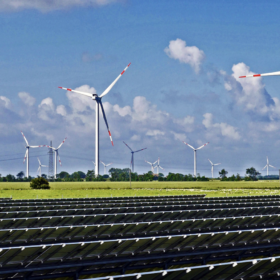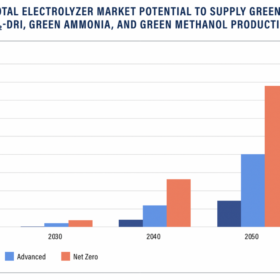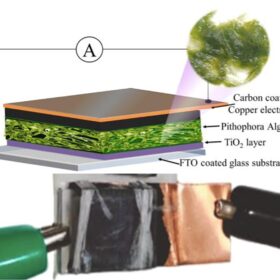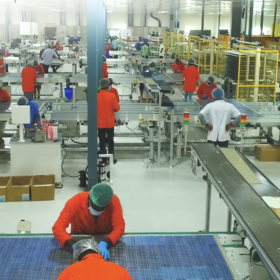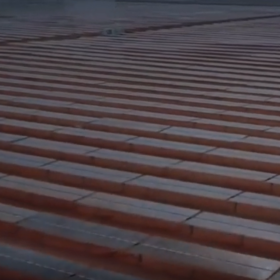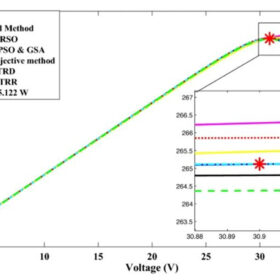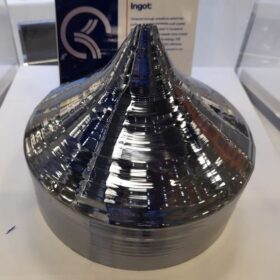Mahindra Susten to set up 150 MW hybrid wind-solar plant in India
Mahindra & Mahindra Group’s renewables unit, Mahindra Susten, will develop a 150 MW hybrid wind-solar project in India for offtake by commercial and industrial (C&I) customers. The total project cost is about INR 12 billion ($143.7 million).
India’s green hydrogen, electrolyzer market poised for growth
The Asia Society Policy Institute says that the electrolyzer market in India to supply green hydrogen for the steel, ammonia, and methanol industries could soar from $4 billion in 2030 to $78 billion by 2050 if the nation stays on track to achieve its declared net zero target.
Indian researchers develop solar cell from living algae
The researcher team, from Amrita Vishwa Vidyapeetham university in Coimbatore, India, sandwiched macroalgae between a carbon-coated copper electrode and a titanium oxide-coated fluorine-doped tin oxide electrode. The 1 cm2 device exhibited a 1.25 mA photocurrent and 0.5 V photovoltage under UV light.
SECI extends bidding for 900 MW of DCR solar modules
Solar Energy Corp. of India (SECI) has extended the bidding process for 900 MW of solar modules produced under India’s domestic content requirements (DCR). Manufacturers now have until April 19 to submit bids for the production and supply of glass-to-backsheet bifacial solar modules with made-in-India PV cells.
Juniper Green Energy switches on 105 MW solar plant in India
Juniper Green Energy has commissioned a 105 MW solar project in India, almost nine months ahead of its scheduled date of completion. The project has a 25-year power purchase agreement (PPA) with Maharashtra State Electricity Distribution (MSEDCL).
India surpasses 75 GW of installed solar capacity
India’s cumulative PV installations hit 75.58 GW at the end of February, according to the latest figures from the nation’s Ministry of New and Renewable Energy (MNRE).
Optimization technique to extract unknown PV system parameters from manufacturers’ datasheets
Developed by an international research team, the proposed methodology can reportedly be used with all kinds of solar panels and under different environment conditions. It relies uniquely on the specifications of the modules’ datasheet, temperature and insolation intensity.
Greenfuel Energy releases wall-mounted residential batteries
Greenfuel Energy’s new lithium batteries for residential applications are available in 12.8 V 100 Ah, 25.6 V 100 Ah, and 48 V 100 Ah configurations, with 1 kW to 5 kW of power.
Weekend Read: A battery worth its salt
While lithium ion battery prices are falling again, interest in sodium ion (Na-ion) energy storage has not waned. With a global ramp-up of cell manufacturing capacity under way, it remains unclear whether this promising technology can tip the scales on supply and demand.
Shirdi Sai Electricals targets 10 GW of ingot-to-solar module capacity
India’s Shirdi Sai Electricals says it plans to install 10 GW of ingot-to-solar module production capacity and manufacture solar glass by March 31, 2026.
